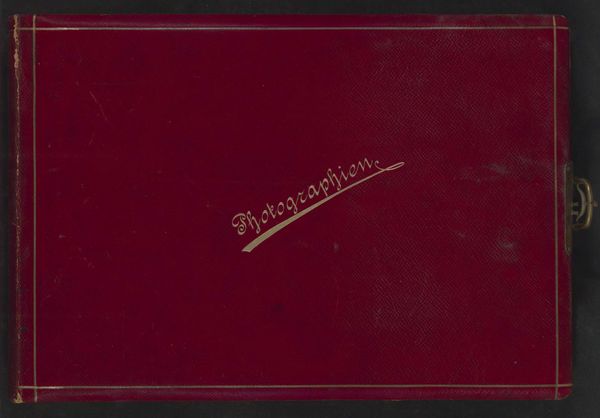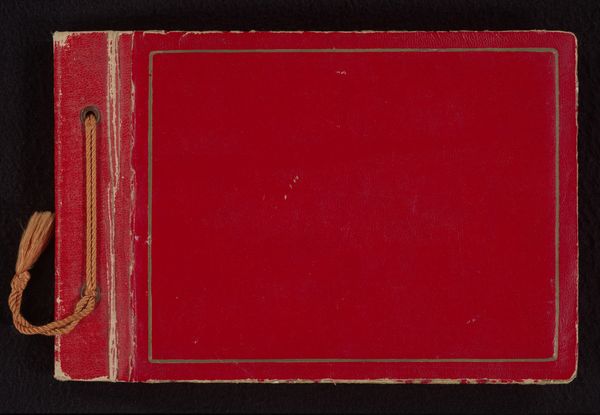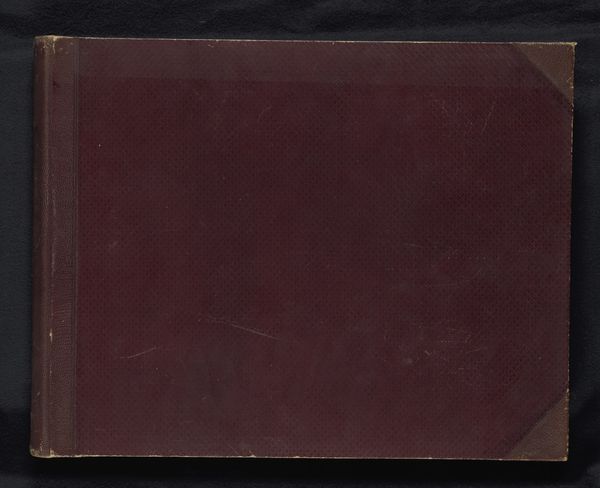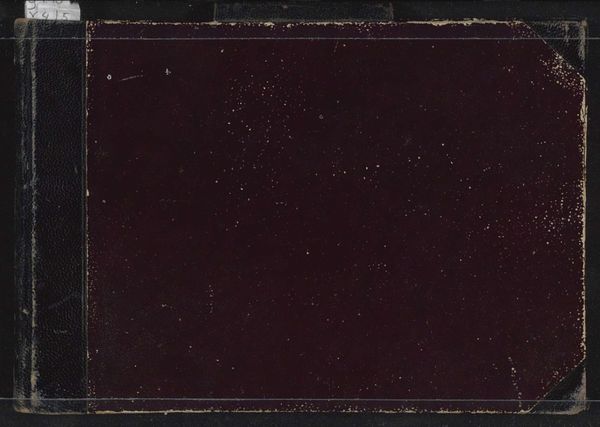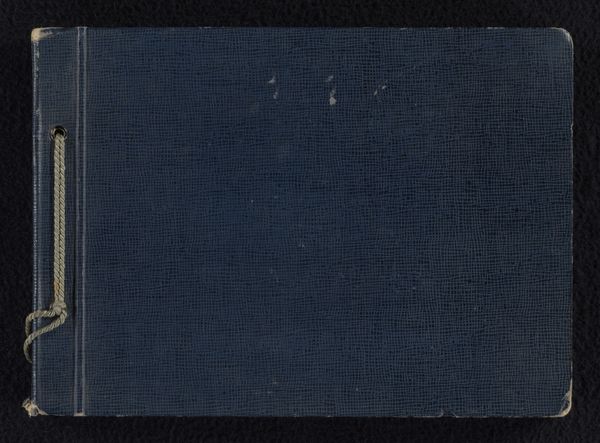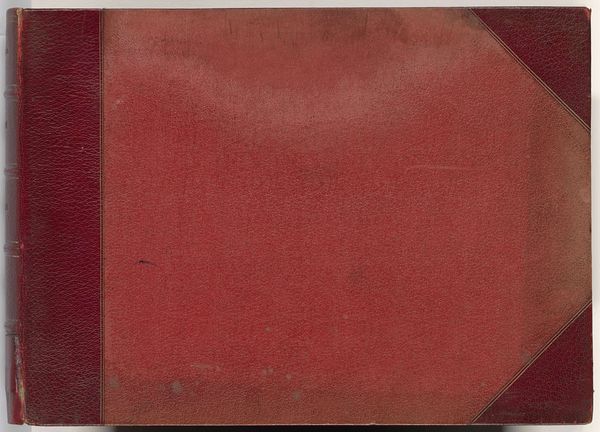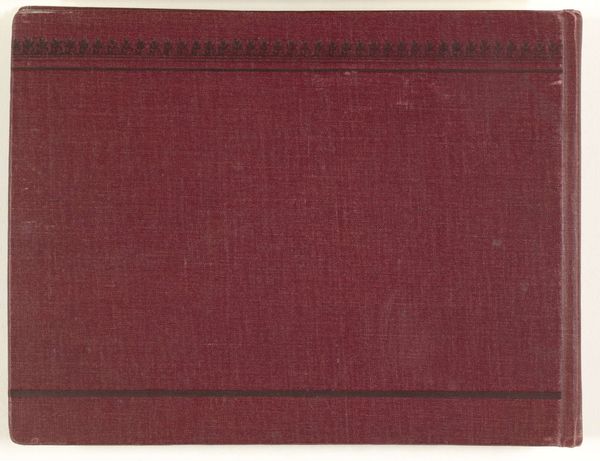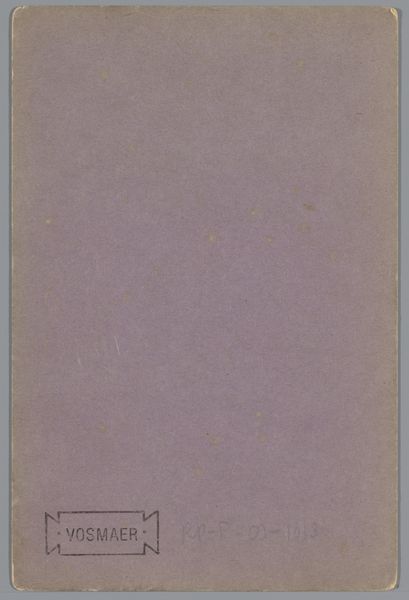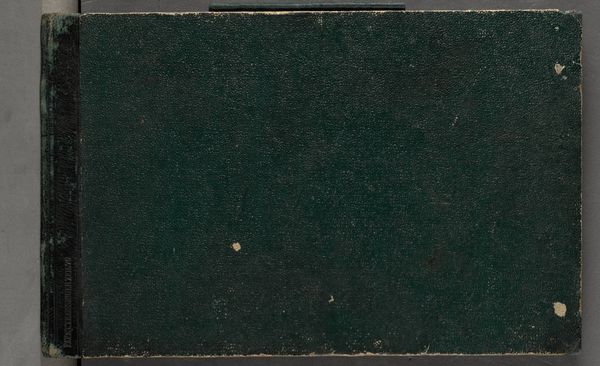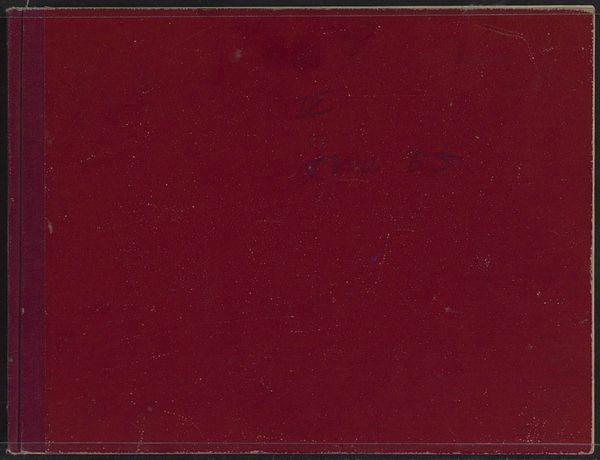
Reisalbum met foto's van Duitsland, Zwitserland, het Suezkanaal en Nederlands-Indië c. 1880 - 1900
0:00
0:00
Dimensions: height 335 mm, width 985 mm, width 483 mm, thickness 43 mm
Copyright: Rijks Museum: Open Domain
Editor: This object, titled "Reisalbum met foto's van Duitsland, Zwitserland, het Suezkanaal en Nederlands-Indië", translates to Travel Album with Photos of Germany, Switzerland, the Suez Canal and Dutch East Indies and was created between 1880 and 1900 by diverse makers. What strikes me most is how the texture of the cover and the slightly faded burgundy hue create such a subdued, almost melancholy feel. As a formal object, what compositional elements stand out to you? Curator: The primary focus should be directed toward the interplay between surface texture and tonal value. Observe how the subtle variations in the maroon material generate a complex field for the eye to traverse. Note, too, the strategic placement of the inscription, rendered in gold; its curvilinear forms introduce a crucial element of contrast with the album’s rectilinear geometry. Consider the extent to which the object's form resonates as a study in contrasting textures: the album's smooth inscription juxtaposed with the rougher, worn exterior. Does this create a dynamic tension within the visual framework? Editor: I see what you mean about the interplay of the smooth writing against the fabric-like texture of the cover. It definitely makes you want to reach out and touch it. What's your read on the overall simplicity? Curator: This reduction to core visual components—color, texture, and compositional balance—amplifies its intrinsic value. It stands as an exercise in restrained elegance. It resists superficial grandeur, preferring instead to draw strength from material essence and studied arrangement. I think we might view the scratches and worn corners less as damage and more as subtle accents, a visual disruption enhancing an aged surface and providing valuable texture. Editor: I never thought of the imperfections as part of the design. Thanks! Curator: Indeed. And perhaps next time, you will consider such aspects more.
Comments
No comments
Be the first to comment and join the conversation on the ultimate creative platform.
